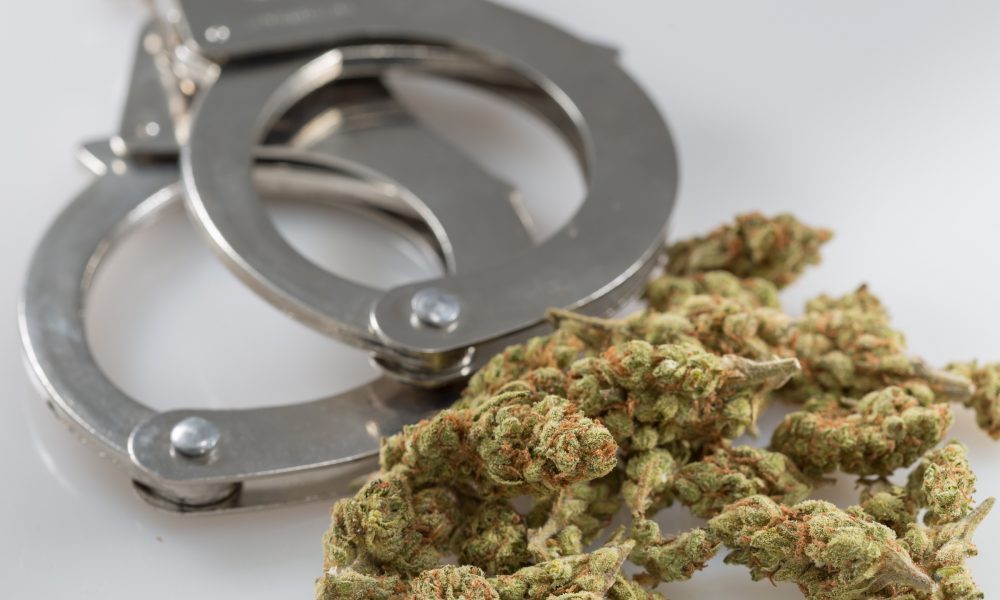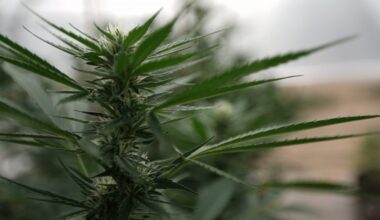Findings from a new government-funded analysis of U.S. Army recruits suggest that past cannabis use has relatively little impact on overall performance. Recruits with documented histories of marijuana use were just as likely as their peers to make sergeant, for example, and while they were more likely to leave the Army over drug use, they were less likely to separate as the result of health or performance concerns.
Further, there’s no strong evidence that the continuing trend of legalization across the country has significantly affected recruit outcomes.
“Contrary to expectations, waivered recruits and recruits with a documented history of marijuana or behavioral health conditions are not uniformly riskier across all dimensions,” says the analysis, from the RAND Corporation. “In some cases, they are historically more likely to perform better.”
The nearly 200-page report centers on waivers, which allow the Army to reconsider applicants who are initially disqualified for various reasons. Among those reasons is cannabis use. Applicants who test positive for marijuana or with a documented history of use—including court records and self-disclosure—require waivers to enlist. The same goes for people diagnosed with attention-deficit/hyperactivity disorder (ADHD), anxiety disorders or depression, who in some cases may not even qualify for a waiver.
“Without waivers, a failed drug test for marijuana would block the one-third of American 18-year-olds who say they have used marijuana at least once in the past year,” a RAND official wrote in a blog post about results. “Recruits who make it into the U.S. Army despite low-level histories of marijuana use perform no worse, overall, than other soldiers. That should be welcome news in recruiting offices nationwide.”
“Recruits with a history of marijuana were just as likely as other recruits to complete their first term and make sergeant, and they were less likely to leave the Army for health or performance reasons.”
The Army asked RAND’s Arroyo Center, its sole federally funded research and development center, to analyze the performance of the recruits who receive waivers. “The Army was also interested in the extent to which increasing the share of recruits who receive waivers (or who have a documented history of marijuana, ADHD, or depression/anxiety) affects the overall performance of that accession cohort,” the report notes.
We looked at thousands of U.S. soldiers who enlisted despite past marijuana use and other disqualifying marks on their records, such as depression or anxiety disorders.
We found no evidence that they were riskier across the board than any other recruits. https://t.co/YfM1Yt675b
— RAND Corporation (@RANDCorporation) October 31, 2021
The analysis collected records on every recruit who entered the Army from fiscal year 2001 to fiscal 2012, tracking them through 2018. Researchers looked at “the application waiver screening process through enlistment until either separation…or reenlistment.”
Overall, the performance of a cohort of recruits “would change relatively little if waivers were increased,” researchers found. Aggregate effects would be “relatively small for the accession cohort as a whole, and, in some cases, the effects are improvements, not reductions, in performance.”
RAND authors acknowledged those findings ran “contrary to expectations,” while other conclusions reinforced their existing views.
“The result that most closely conforms to our expectations are in cases of recidivism,” the report says. Recruits with weight- or health-related waivers, including those with behavioral health conditions, were more likely to leave the Army for health-related reasons, for example. Recruits with a documented history of using marijuana or other drugs were more likely to separate due to drug use.
A high-school diploma or equivalent “often mitigates, at least partially,” those adverse outcomes, the analysis found.
The report should quell concerns that state-level moves to legalize cannabis has hurt the quality of incoming recruits. “The legalization of marijuana has not resulted in worse recruit outcomes,” it says succinctly. The trend might actually be helping, though it’s still hard to say.
“Although we find some indications that legalization could be associated with an improvement of outcomes, these results are not robust,” says one finding. “The key conclusion, then, is that there is no strong evidence that changes in marijuana legalization have substantially changed recruit outcomes.”
Currently, applicants can request waivers for positive tests for marijuana during their physical exam, in which case they must wait 90 days and then test negative. Waivers can also be requested for misdemeanor convictions for possession of cannabis or paraphernalia (provided they pass the drug test at the exam) and misdemeanor convictions for driving while under the influence of marijuana or while impaired.
With regard to cannabis specifically, the analysis found no statistically significant relationship between a documented history of use and a recruit’s performance in most cases. “However, in the cases where we do estimate a substantive and statistically significant effect, the estimates generally show that these recruits are more likely to have adverse outcomes.”
Recruits with a documented history of using cannabis and a non-traffic offense waiver, for example, are 32.7 percent more likely to separate from the Army due to misconduct regarding something other than drug abuse and 72.9 percent more likely for drug abuse specifically. They’re also 81 percent more likely to receive a demotion and 16.1 percent more likely to receive a favorable person status.
On the other hand, those with a documented history of marijuana and a non-traffic offense waiver who did separate were 47 percent less likely to leave due to health-related reasons and 40.8 percent less likely to do so for performance reasons.
Marijuana use is still a disqualifying offense for anyone hoping to join the U.S. Army. But those who’ve left it in the past can ask for a waiver.
RAND researchers wanted to know: How do those waivered recruits actually perform once they get into uniform? https://t.co/BjYOt6qhDJ
— RAND Corporation (@RANDCorporation) October 30, 2021
The RAND report suggests the Army adopt some changes to how it handles waivers. Among them, analysts suggest the branch “distinguish between recruits with only a documented history of marijuana and those who also have misconduct offenses,” noting that outcomes are meaningfully different between the two groups.
“For example, separation for drug abuse is less likely for recruits with only a documented history of marijuana without any misconduct offenses,” the report says, “and (unlike those who also have misconduct offenses) they are no more likely to have a suspension of favorable person status than any other recruit.”
“The implication,” authors conclude, “is that the Army should continue to carefully screen recruits with a documented history of marijuana but should be less concerned with these recruits if they have no misconduct offenses.”
The report attributes some of the mixed findings, including the negligible impact on overall recruit outcomes, to the waiver process itself. The Army by rule is supposed to “apply the ‘whole person’ concept,” RAND notes. The concept centers on whether a person “has overcome his or her disqualifications,” it observes, although “no formal definition of the whole person concept is provided.” In practice the decision is made by individuals with authority to approve the waiver, who decide based on personal judgement.
It would take a much, much greater proportion of recruits with documented histories of cannabis use to make a meaningful impact on military performance, the report notes. But in what the report calls “extreme” cases—for example the rate of documented cannabis use among recruits rising from the historical rate of 0.2 percent between 2001 and 2012 to a whopping 20 percent (which RAND selected arbitrarily)—there might be at least some cause for concern.
“The share of recruits who are projected to separate for drug-related misconduct reasons would increase (from a baseline of 3.6 percent to 5.3 percent), as would the percentage of recruits who are projected to be demoted (from 14.1 percent to 16.1 percent). We also find that the percentage of recruits who would reenlist is projected to fall (from 36.6 percent to 35.8 percent).”
Another recommendation aims at a better understanding—as well as less stigma—around what a waiver means. “The term waiver is not well understood by policymakers and the press, and the term is often confused to mean that the Army is lowering standards and enlisting unqualified soldiers,” the report says. In fact, the allowance for a waiver is part of the enlistment process itself. “The Army should create, disseminate, and use a clear definition that highlights that all waivered recruits are qualified and eligible to enlist, even if they do not meet every enlistment standard.”
Meanwhile at the federal level, the U.S. Department of Veterans Affairs (VA) under the Biden administration last month continued its opposition to a bill that would require VA to conduct clinical trials into the therapeutic potential of marijuana for military veterans. The department said that while it isn’t ideologically opposed to the measure, it views it as “redundant” and excessively prescriptive.
“The proposed legislation is not consistent with VA’s practice of ensuring scientific merit as the basis for a randomized clinical trial,” VA’s David Carroll said in testimony before a House subcommittee.
In September, meanwhile, a U.S. House committee passed a defense-spending bill that includes a report voicing concern about racial disparities in military drug testing, ordering the Pentagon to review the issue.
Unlike in past sessions, however, committee lawmakers did not file an amendment requiring the secretary of defense to issue regulations clarifying that military branches can grant reenlistment waivers to service members who have committed a single low-level marijuana offense.
The House passed a version of last year’s National Defense Authorization Act with a provision that urged leaders to exercise discretion in penalizing service members for marijuana use.
The changing state-level legal status of marijuana—and nationally, hemp (defined by federal law as cannabis that contains less than 0.3% THC)—has sometimes led to tension between lawmakers and military leaders. In July 2020, the House approved a measure to allow service members to use products containing hemp and its derivatives, including CBD. But the Navy replied by, just four days later, expanding its ban on CBD and hemp products for sailors to cover topicals like shampoos and soaps.
The Navy offered an explanation for the policy change: “The move was done to protect Sailors from potential tetrahydrocannabinol (THC) exposure that could negatively impact mission readiness and disqualify a Sailor from continued service,” it said. “It is impossible for consumers to determine how much THC a product actually contains in the current environment where label claims are not trustworthy.”
The House-passed protection was not brought up in the Senate and did not make it into law.
Medical Disclaimer:
The information provided in these blog posts is intended for general informational and educational purposes only. It is not a substitute for professional medical advice, diagnosis, or treatment. Always seek the advice of your physician or other qualified healthcare provider with any questions you may have regarding a medical condition. The use of any information provided in these blog posts is solely at your own risk. The authors and the website do not recommend or endorse any specific products, treatments, or procedures mentioned. Reliance on any information in these blog posts is solely at your own discretion.







